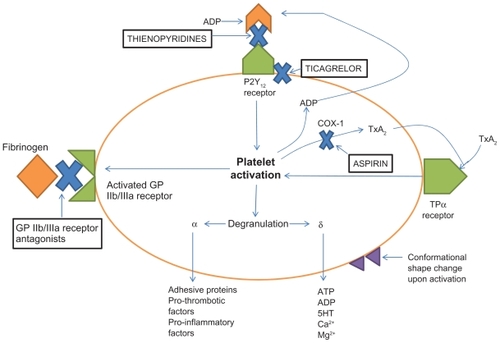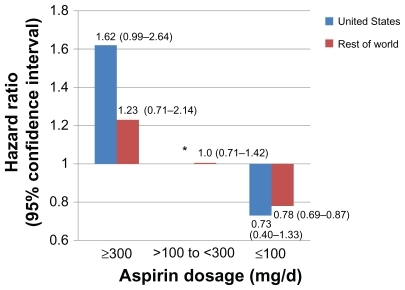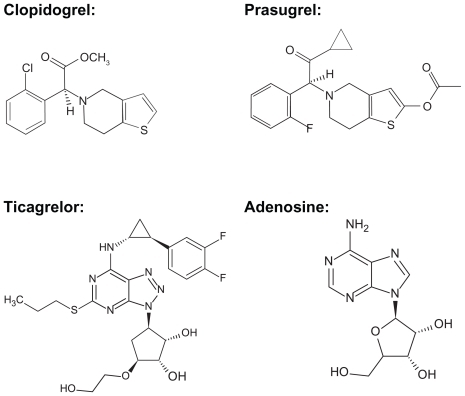Figures & data
Figure 1 Adenosine diphosphate (ADP) binds to the P2Y12 receptor. This binding results in activation of the platelet which causes a conformational shape change, activation of the glycoprotein (GP) IIb/IIa receptors, and platelet aggregation. Ticagrelor binds at a site on the P2Y12 receptor that is separate from the ADP binding site and produces a non-competitive inhibition, while the thienopyridines, clopidogrel and prasugrel, bind directly to the ADP binding site on the P2Y12 receptor permanently blocking this site. Antiplatelet agents that block the P2Y12 receptor have complementary effects with aspirin in terms of platelet inhibition because their mechanism of action is different than that of aspirin, which blocks cyclo-oxygenase-1 causing a decrease in thromboxane A2.

Table 1 Comparison of P2Y12 receptor inhibitorsCitation15,Citation20,Citation24,Citation26,Citation58
Figure 3 Hazard ratios and 95% confidence intervals (in parentheses) for the PLATO study population with regards to the primary efficacy endpoint subdivided by daily aspirin dosage and geographic region. Daily dosages of aspirin > 300 mg were associated with a blunting of the benefit of ticagrelor, whereas dosages < 100 mg were associated with benefit of ticagrelor compared to clopidogrel. This finding was seen regardless of geographic region, but was most pronounced in the United States population which tended to use higher daily dosages of aspirin compared to the rest of the world.Citation35

Table 2 Nonhemorrhagic side effects observed with ticagrelor in PLATOCitation20,Citation28
Table 3 Practical considerations when comparing clopidogrel, prasugrel, and ticagrelor
Table 4 Bleeding rates in the PLATO and TRITON-TIMI 38 trials based on TIMI criteriaCitation8,Citation28
